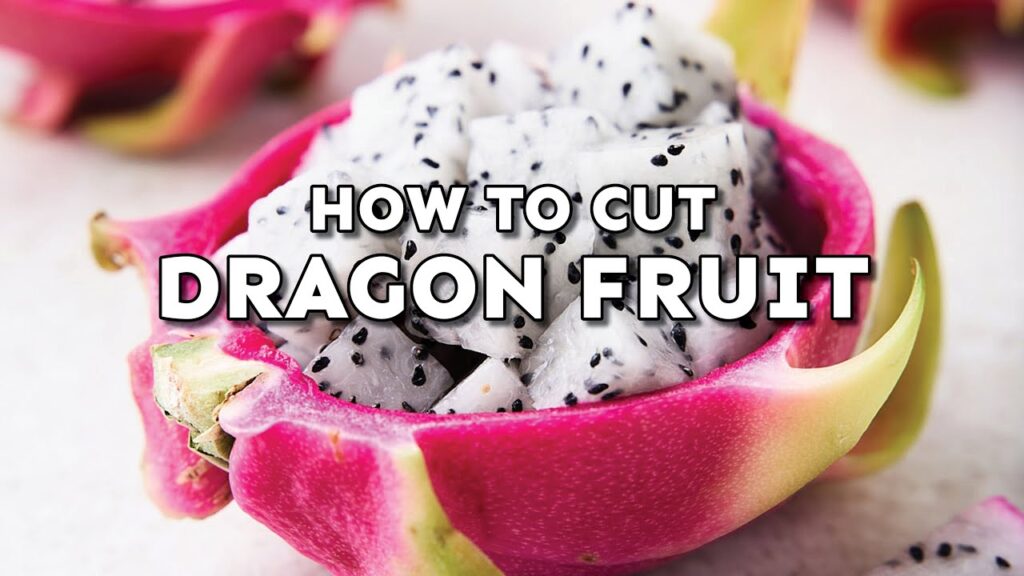How to Cut Dragon Fruit: A Step-by-Step Guide
Dragon fruit, also known as pitaya, is a tropical fruit that has gained popularity worldwide for its unique appearance and potential health benefits. While the vibrant pink skin and white flesh with black seeds may seem intimidating at first, cutting a dragon fruit is a simple process. In this comprehensive guide, we will walk you through the steps to properly cut and prepare this exotic fruit, along with tips on selecting, storing, and incorporating it into your diet. Additionally, we will provide a FAQ section and a table with relevant links for further information.
Selecting and Storing Dragon Fruit
Choosing the Right Dragon Fruit
When selecting dragon fruit, look for specimens that are heavy for their size and have a bright, unblemished skin. Avoid fruits with wrinkled or discolored skin, as they may be overripe or damaged. The stem end should be intact and green, indicating freshness.
Storing Dragon Fruit
Dragon fruit can be stored at room temperature for up to five days. If you need to store it for longer, place it in the refrigerator for up to one week. Avoid storing dragon fruit near other fruits that release ethylene gas, such as apples or bananas, as this can cause the fruit to ripen too quickly.
Cutting Dragon Fruit
Necessary Tools
- Sharp knife
- Cutting board
- Spoon (optional)
Step 1: Wash the Dragon Fruit
Rinse the dragon fruit under cool running water and pat it dry with a clean paper towel or cloth.
Step 2: Cut off the Stem End
Using a sharp knife, slice off the stem end of the dragon fruit, creating a flat surface.
Step 3: Cut the Fruit in Half
Place the dragon fruit on its side on a cutting board. Carefully slice the fruit in half lengthwise, using a sawing motion with your knife.
Step 4: Scoop out the Flesh
Using a spoon or a knife, gently scoop out the white flesh from the skin. If the skin is green, you can leave it attached to the fruit.
Step 5: Slice or Cube the Flesh
Depending on your preference, you can either slice the dragon fruit flesh into half-moons or cube it into bite-sized pieces.
Step 6: Remove the Black Seeds (Optional)
If desired, you can remove the small black seeds from the flesh by scraping them out with a spoon or knife. However, the seeds are edible and provide additional nutrients.
Preparing Dragon Fruit
Smoothies and Juices
Dragon fruit adds a vibrant color and mild, sweet flavor to smoothies and juices. Blend it with other fruits, vegetables, yogurt, or milk for a refreshing and nutritious drink.
Salads and Salsa
Cubed or sliced dragon fruit makes a great addition to fruit salads, green salads, and salsas. Its crunchy texture and mild sweetness pair well with other tropical fruits, greens, and savory ingredients.
Desserts and Baked Goods
Dragon fruit can be used in various desserts, such as pies, tarts, and ice cream. Its natural sweetness makes it a great substitute for other fruits in recipes.
Garnishes and Toppings
Sliced or cubed dragon fruit can be used as a colorful and flavorful garnish for yogurt, oatmeal, or even savory dishes like grilled meats or fish.
Nutritional Benefits of Dragon Fruit
Dragon fruit is a nutrient-dense fruit that offers several health benefits:
- High in antioxidants, which may help reduce inflammation and protect against chronic diseases
- Good source of dietary fiber, which supports digestive health and may aid in weight management
- Contains vitamin C, which supports immune function and skin health
- Provides magnesium, a mineral essential for bone health and muscle function
- May have prebiotic properties, which can promote the growth of beneficial gut bacteria
Conclusion
Dragon fruit is a unique and versatile fruit that can be easily incorporated into a healthy diet. By following the steps outlined in this guide, you can confidently select, store, and prepare dragon fruit for a variety of culinary uses. Whether you enjoy it as a snack, in a smoothie, or as part of a salad or dessert, dragon fruit is a delicious and nutritious addition to any meal.
FAQ
- Is dragon fruit safe to eat?
Yes, dragon fruit is safe to eat and is commonly consumed around the world. However, some people may have allergic reactions to it, so it’s always best to consume it in moderation and monitor your body’s response. - How do I know if a dragon fruit is ripe?
A ripe dragon fruit will have a bright, unblemished skin and will be heavy for its size. Avoid fruits with wrinkled or discolored skin, as they may be overripe or damaged. - Can I eat the black seeds in dragon fruit?
Yes, the small black seeds in dragon fruit are edible and provide additional nutrients. If you prefer, you can remove them by scraping them out with a spoon or knife. - How long does dragon fruit last?
Dragon fruit can be stored at room temperature for up to five days or in the refrigerator for up to one week. Avoid storing it near other fruits that release ethylene gas, as this can cause it to ripen too quickly. - What are the health benefits of dragon fruit?
Dragon fruit is high in antioxidants, fiber, vitamin C, and magnesium. It may also have prebiotic properties that promote the growth of beneficial gut bacteria.
| Aspect | Description | Wikipedia Link |
|---|---|---|
| Dragon Fruit Overview | A tropical fruit known for its unique appearance and potential health benefits | https://en.wikipedia.org/wiki/Pitaya |
| Selecting and Storing | Tips for choosing ripe dragon fruit and storing it properly | |
| Cutting and Preparing | Step-by-step guide on how to cut and prepare dragon fruit | |
| Nutritional Benefits | Overview of the health benefits of dragon fruit | |
| Culinary Uses | Ideas for incorporating dragon fruit into smoothies, salads, desserts, and more |
This article provides a comprehensive guide on how to cut and prepare dragon fruit, along with information on selecting, storing, and enjoying its nutritional benefits.



